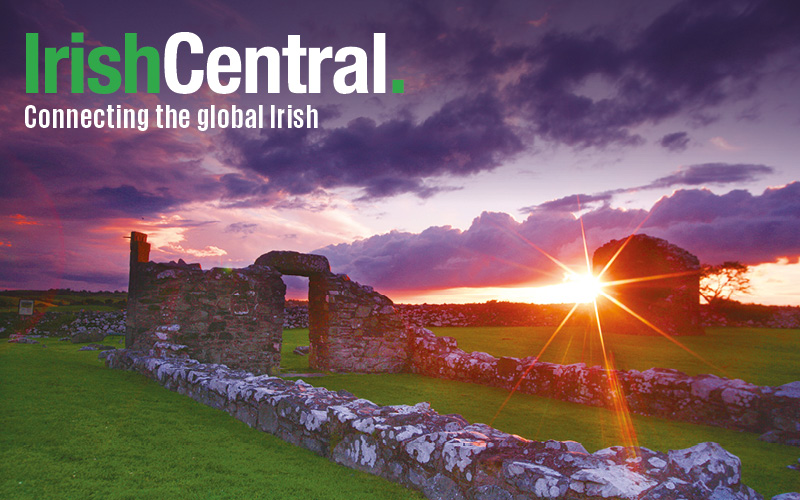As an eye-witness from two blocks away, I have often been asked about what it was like reporting 9/11 and the effect on me of seeing so many horrible sights that day. But I was lucky.
On such occasions my thoughts turn to the one journalist who was killed, Bill Biggart, an Irish-American photographer who had worked in several trouble-spots, including Northern Ireland, and among the thousands of prints in his riverside studio were several of Gerry Adams and of Belfast kids.
When the first plane hit the north tower, Biggart grabbed his cameras and started walking the three kilometres to the site, snapping pictures as he went. His wife, Wendy Doremus, called her husband on his mobile when the second tower was hit. “Bill, this is an attack, one of the towers collapsed and the Pentagon’s been hit,” she said. He replied: “I’m okay, I’m with the firemen. I’ll meet you in twenty minutes.” He was killed instantly when the second tower collapsed.
Wendy looked for Bill for days, calling at hospitals and handing out his picture. On Saturday afternoon they found his body, and his cameras. His last pictures, taken as the tower was falling onto him, showed that there was no panic among the firemen on debris-strewn West Side Highway. They didn’t know that death was imminent.
As for the long term effect on me, well I guess it is much the same as on anyone who was close by on 9/11, indeed anyone in New York. On the day I was totally cool and professional. Maybe I was in shock. But now I cannot watch footage on television of the twin towers burning. When I tried just recently to break the self-imposed tabooI almost had a panic attack.
Everyone in the world must have residues of the nightmare in their psyche. Everyone recalls where they were and how they first heard of the planes crashing into the twin towers of the World Trade Center in New York, on 11 September 2001. The catastrophe killed over 2,600 people, some of them my neighbours and acquaintances, transformed Wall Street into a scene from a nuclear winter, destroyed the environment in downtown Manhattan, and subjected us to horrors that haunt us still.
I had arrived in New York as Irish Times international business editor nine months earlier. I thought I was leaving a lifetime of reporting wars and conflicts behind me.
In January 2001, my wife Zhanna and I found an apartment and office in Tribeca Pointe Building in Battery Park City. It was right on the edge of the Hudson River, and three blocks north of the World Trade Center. It was a truly delightful place to live.
In summer it had a Mediterranean feel, with yachts sailing by and sunbathers stretched out on the grass. It was a safe place for parents with kids, and for roller-blading.
Most people think of the World Trade Center as the two soaring towers rising up 110 stories into the sky, containing the offices of bankers, traders, shippers, commodity brokers, insurance agents and lawyers. Actually it was a complex of seven buildings on 16 acres. It had a broad shopping and service concourse underneath. It was not just a place where 30,000 people came to work every day but a village, with its own zip code, 10048.
On weekdays the area below the towers teemed with office workers like a Tokyo railway station, but at weekends the complex belonged to us, the Battery Park City residents. I remember that the evening of September 10 was warm and still.
On September 11 American Airlines Flight 11 crashed into the north tower at 8.46 a.m., laden with 10,000 gallons of fuel. The plane had flown past my apartment block, but downtown Manhattan is a very noisy place and I don’t remember hearing it as I worked on an article on how the economic downturn was affecting New York’s restaurants.
When the bang shook our building, I thought, from years of monitoring the sound of explosions, that it was a bomb. I jumped up and saw a gaping hole near the top of the north tower, the nearest of the two towers, with flames and black smoke pouring out.
I made several quick telep hone calls, to my news desk, to my Irish Times colleague Paddy Smyth in Washington DC. I also called RTÉ, to which I often gave interviews, to alert them to what had happened. It was almost two o’clock in the afternoon in Ireland. They asked me to go on air immediately in Ireland on RTE 2. Thus I broke the story in Ireland on the news at 2.00 pm.
Shortly afterwards Joe Duffy on his RTE programme rang Niall O’Dowd in midtown for a first-hand account. The two of us then became the Irish voices reporting the news and developments all that terrible afternoon for listeners at home.
After the second plane, United Flight 175, smashed into the south tower between the seventy-eighth and eighty-fourth floors, decided to go to the twin towers myself, and took the lift to the ground floor forty-two storeys below.
As I passed through the lobby of my building, a woman was in hysterics; her husband worked in the World Trade Center (he survived). I went to the corner of Vesey Street and West Side Highway. People were running in panic away from the burning towers. Others stood in shock, hands over open mouths, heads craning upwards. A security man pushed me back. Someone screamed, “Oh my God, people are jumping!” More bodies were falling onto Vesey Street and onto the plaza between the towers. Some fell with arms extended, as if for a crucifixion, taking what seemed like 10 seconds to reach the ground.
I thought I had better get back to my office. Frankly I was scared that the towers would collapse on top of me or that I would be hit by falling debris. Also, police officers were closing off the streets and evacuating apartment buildings. I was worried that I woul d not be allowed back to my office. I made it back minutes before police ordered all residents of the building to leave.
Just before 10 a.m., I saw office workers who had been milling around the lawns of Battery Park suddenly turn and run as fast as they could. The south tower had started to fall. The top seemed to tilt over towards the river, and then crush the whole building beneath it. Jagged pieces of the tower the size of suburban houses crashed onto two fire engines, and engulfed rescue workers on the roadway.
A huge cloud of dust and ash rose from the impact, enveloping the Embassy Suites Hotel below and the 50-storey buildings of the World Financial Center. I was by now completely numb, working on my reflexes, typing and making calls at high speed. The story was so enormous, I just had to keep my emotions in check, because my responsibilities to my newspaper were so great.
The north tower was now in its death throes. The end came at 10.28 a.m. The 110-storey tower imploded floor by floor, spewing out clouds of debris and atomised flesh. As the yellow-brown cloud billowed out, rescue workers fled towards the river. Some jumped in and were pulled on board ferry boats. The dense mass of dust approached our apartment until we could almost reach out and touch it. Then it stopped, and retreated slowly, pushed back by a steady breeze from the Hudson. It left a thick layer of ash and dust coating the streets and parks below. It covered the broken bodies on Vesey Street like a shroud.
The grey of the landscape was broken by orange-red flames licking up from cars at Vesey and West Side Highway which had been set on fire by the burning debris. More cars were alight on Greenwich Street. The wide walkway across West Side Highway from the Winter Gardens lay broken on the highway. Beyond it, the Greek Orthodox Church had been crushed out of existence.
Thousands of scraps of paper floated in the air like giant snowflakes. Some firemen stood in Greenwich Street, stunned, coated from head to foot in dust. The local telephone lines were cut when the towers collapsed, and the mobile telephone network was overwhelmed, so I could not contact anyone in New York after that. But the long-distance service and broadband still worked. I was able to call my family, keep up contact with my office in Dublin, send digital photographs, and do radio interviews and television voice-overs throughout the afternoon.
People who have forgotten anything I ever wrote tell me they recall these broadcasts. I always avoided emotion in radio interviews, but that day, when describing events on RTÉ, I remember involuntarily saying “Oh my God, this is terrible” as I saw more bodies falling to the pavement below.
After we were evacuated from our apartment we managed to find rooms in the W Hotel on Lexington Avenue in midtown Manhattan. I turned our room into the temporary Irish Times office.
After a week, a bill was slipped under the door asking for immediate payment, since the amount exceeded $5,000, mainly due to the frequent use of the international line to which I had hooked my computer. I went to see the manager in the lobby, explained my situation, and asked if he could cut a deal on the telephone charges. He beckoned me to sit down. “I’m not going to allow you to leave this hotel . . .” he said (my heart sank), “. . . until we both agree on a reasonable charge for the telephone.” He was as good as his word. When we were allowed back to Battery Park City, he cut the bill almost in half.
I went back to the site of the stricken World Trade Center with Niall O’Dowd on September 15 and we were able to bypass police lines and clamber over the ruins at Ground Zero, thanks to a friendly NYPD contact who, I recall vividly, blinked back tears as he looked at the wreckage and said, “Bin Laden is dead man walking.” Unfortunately the al Qaeda leader is still out there somewhere, still very much alive. Let’s hope he never succeeds again.




Comments